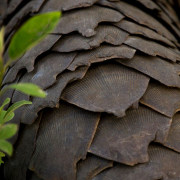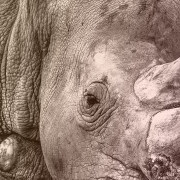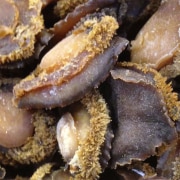|
Getting your Trinity Audio player ready...
|
With so many lucrative avenues for criminals to choose from nowadays, the fact that international wildlife crime (IWT) and the smuggling of wildlife products continues to increase is a measure of the vast sums of money to be made from this illegal practice. According to the UN Office on Drugs and Crime (UNODC), for example, which it spelled out in its 2020 World Wildlife Crime Report, “the annual illicit income generated from ivory and rhino horn trafficking between 2016 and 2018 was estimated at US$400-million for ivory and US$230-million for rhino horn trafficking”.
In our series on corruption in wildlife, forest and fisheries crime, we presented an overview in part 1, and we discussed the link between wildlife crime and corruption in part 2. In part 3 we explored the link between wildlife crime and other crime, and in part 4 we continued the convergence theme by highlighting a recently released case study by the Wildlife justice Commission (WJC) on South Africa’s long-standing perlemoen smuggling trade. In this final part 5, we focus on the money laundering methods and routes used to spirit away the proceeds of these crimes.
We must stress that this is merely a high-level overview of the sector, as it is extremely complex and reaches deep into the global trade and financial systems.
The UNODC report states that the illicit financial flows that emerge from IWT could be almost twice as much as the figures it quoted for income (see paragraph 1) – depending on the complexity of the supply chains. These estimates, it cautions, are not as accurate as it would like, because the significant gaps in understanding supply and demand for certain wildlife products make such estimates challenging.
A 2020 report produced by the Financial Action Task Force (FATF) describes the industry as “a major transnational organised crime, which generates billions in criminal proceeds each year. IWT fuels corruption, threatens biodiversity, and can have a significant negative impact on public health and the economy”.
With all this money to be raked in, criminals need to move, hide and launder their proceeds and so, says FATF, wildlife traffickers exploit weaknesses in the financial and non-financial sectors, enabling further wildlife crimes and damaging financial integrity.
Yet despite this disturbing information, says FATF, jurisdictions do not place enough emphasis on pursuing the financial trails of IWT, aiming rather to seize the actual products of crimes. The organisation conducted its study “to support jurisdictions to combat related money laundering”, which should be considered as being outside the more mainstream types of crime.
Global threat
Jurisdictions should view the proceeds generated by IWT as a global threat, FATF emphasises, rather than as a problem only for those jurisdictions where wildlife crimes originate. They should also scrutinise the legitimate wildlife trade and other import-export businesses, which are misused by criminals as a cover. This does present a hindrance to uncovering illegal activities. Perpetrators also rely regularly on corruption, complex fraud and tax evasion.
And the very fact that there have been relatively few financial investigations means that private and public sector have limited knowledge of the methods and trends used in laundering proceeds of wildlife crime. But following the money will lead to more information about and identification of the wider networks, the syndicate leaders, the criminals who provide specialised services and skills, and the financiers involved.
As each of these actors has their own particular place in the chain, identifying one of them through tracing the money trail will lead to the discovery of the surrounding links, and so on – with the long-term result of slashed profits for IWT criminals.
How do they do it?
“Every time a seizure of fresh ivory, rhino horn, or timber is made, it is too late,” says UNODC grimly. “The animal is dead or the forest has been logged. Therefore, part of UNODC’s response to wildlife and forest crime is to tackle the financial flows targeting the way in which the organised criminal gangs pay the operational costs of poaching or illegal logging or cover the costs of shipping and transportation.”
A joint cross-border effort involving law enforcement, financial intelligence units and the private sector – especially financial institutions – will boost the chances of a successful investigation.
Any illegal supply chain starts with poaching. The source countries are usually those with rich biodiversity and/or weaker law enforcement and criminal justice systems. Before the goods reach the destination countries, they pass through transit countries which may have higher levels of corruption or busy trade and transport hubs, or both. Then the products pass to local traders and from them to intermediaries who put together larger shipments on a national or subregional scale. These shipments are taken by internationally connected individuals or groups who ensure they reach their destination markets, mostly in Asia, and end up in customers’ hands via local traders.
Meanwhile, laundering of proceeds goes on in source, transit and destination countries, says FATF. Most of the proceeds end up in the country where the syndicate leader(s) is based – this is usually the destination country or a neighbour. However, laundering can occur at other stages and in source and transit countries.
“Syndicates have also re-invested proceeds back into source countries to cover the ongoing costs of criminal activity (e.g. costs for shipping loads, vehicles etc.),” says FATF. “Importantly, criminals may divert and conceal proceeds from IWT through countries outside of source, transit and destination countries for illegal wildlife.”
Syndicate leaders do not usually sully their hands with the sourcing of wildlife products. They leave this to local controllers in source countries, who arrange to get the goods from local poachers, breeders or farmers. These controllers often have unique local knowledge or language skills, says FATF, and can conceal their financial activities behind a legitimate business front.
Cash is extensively used, mainly to pay local suppliers. Mobile money is less popular, but is also used. Syndicate leaders may also launder money through payments for miscellaneous expenses. The FATF study determined that most criminals handled their own financial and laundering tasks, though some used professional launderers.
Misuse of the formal financial sector includes the placement (inserting the dirty money into the system) and layering (progressively making the funds appear legitimate by moving them away from the source and using them, in smaller amounts, for other purposes) of funds. This may take the form of cash deposits disguised as loans or payments, e-banking transactions possibly tied to a credit card or bank account, licensed money or value transfer systems, and third-party wire transfers through banks.
“This shows the important role financial institutions can play in detecting suspicious activity,” says FATF.
Shell and front companies are important mechanisms – the former to facilitate transfer of value between syndicate members or buyers and sellers, or to hold assets, and the latter to facilitate the movement of the actual products and to blend legal and illegal proceeds, thereby disguising the transfer of value. The front companies are generally involved in legitimate business as well, such as import-export firms or animal-related services such as taxidermists, farms, breeding facilities, pet shops and zoos.
These company structures may be highly complex, involving multiple layers of ownership and multiple jurisdictions. The complexity depends to a large extent on the weakness of the regulatory environments in some financial and incorporation centres.
Informal money or value transfer networks, most of them community-based, may be used to launder and conceal IWT proceeds. These schemes, says FATF, “draw on a network of brokers across countries to facilitate international transfers without money physically crossing borders.”
Criminals also use the time-honoured method of buying real estate and luxury goods.
The increasing evolution of technology facilitates communication and remote payments between buyers and sellers of illegal wildlife, helping them to conclude their dodgy deals with ease. Encrypted communication platforms, illegal wildlife marketplaces hosted via social media sites, online vendor platforms, and the dark net are some of the technologies mentioned, as are VPN connections which disguise the location of wildlife traffickers, and the ever-evolving online payment system.
In the absence of tighter regulations, law enforcement agencies rely extensively on technology companies to detect, track, and disrupt IWT-related sales. Future disruption of these IWT-related internet sales will take a coordinated effort across the public, private, and non-profit sectors.
Recommendations
To address these challenges, FATF says, jurisdictions should consider implementing the following good practices that were observed during its study:
- Identify and assess money laundering risks relating to IWT – a task to be performed within individual countries.
- Prioritise combating the financial flows associated with IWT proportionate to risk, and establish multi-agency co-ordination mechanisms that allow for the sharing of intelligence and information.
- Provide all relevant agencies with the necessary mandate and tools to conduct successful financial investigations into IWT. This may require the adoption of national strategies and re-allocation of resources for combating money laundering and IWT.
- Improve co-ordination between authorities responsible for combating wildlife crimes and those responsible for conducting financial investigations to ensure authorities more regularly exchange information and follow the financial trail.
- Co-operate with other jurisdictions, relevant international organisations and the private sector to combat IWT. This may take the form of more proactive engagement with foreign counterparts, appointing contact points responsible for financial and money laundering inquiries into IWT, regular bilateral or multilateral dialogues, or participation in multilateral co-ordination mechanisms.
- Promote public-private collaboration and information exchange, to effectively identify and address IWT-related money laundering.







